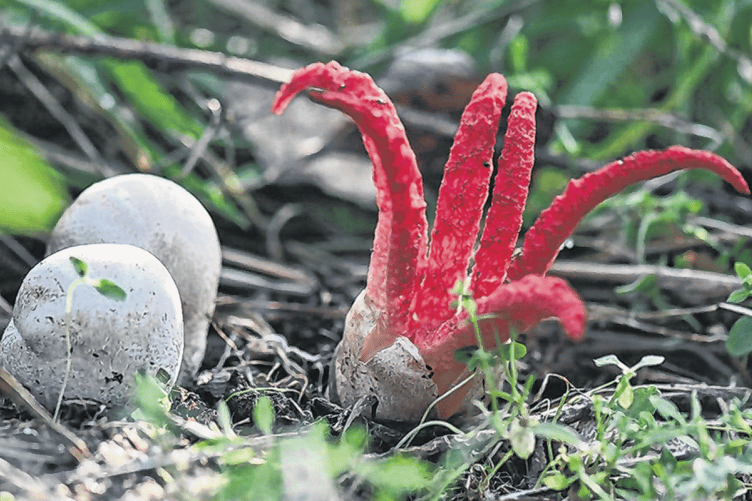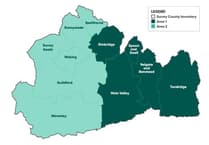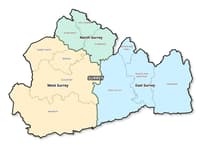FUNGI are Mother Nature’s recycling centre – a fundamental part of the earth’s ecosystem.
They break down the dead organisms, absorb the nutrients back into the soil, and use it to nourish themselves and other living organisms.
There are many known species of fungi, including moulds, mildews, yeasts, rusts, smuts and, of course, mushrooms.
The UK climate creates a great environment for fungi to flourish as they tend to thrive in moderate temperatures and high moisture, especially during the longer periods of darkness in autumn and winter.
The UK is home to a fantastic array of around 15,000 fungi species, some of which are protected under various UK environmental laws. They vary widely in size and form, and live on land, in the water and in the air. Some live within and upon plants and animals.
With today being Halloween (October 31), here are five spooky fungi to watch out for:
Witches’ Butter (Tremella mesenterica) looks like a yellow-orange gelatinous brain-like mass, around 5cm high –hence its alternative name Yellow Brain. It is seen on recently-fallen tree branches as well as on dead branches still attached to a tree. It is common throughout the UK.
Elfin Saddle (Helvella lacunose) is a rather morbid-looking, slate grey fungus with a warped, melted wax-like stem and irregular folded cap, around 5cm high. Elongated holes running through the stem give a haunted appearance. Its fruiting season is from September to November. It is common throughout the UK, in deciduous, mixed or evergreen forests.
Dead Man’s Fingers (Xylaria Polymorpha) has macabre-looking clusters of hard, swollen, warty “fingers”, 3cm to 8cm high. When young they are pale grey with a whitish tip. Inside, the flesh is white and tough under the black outer layer. It is fairly common throughout the UK and can be found on tree stumps and buried dead wood, especially beech, and is often seen poking up through moss and dead leaves. It fruits all the year round, particularly in spring and summer.
Devil’s Fingers (Clathrus archeri) is rare in the UK, but you might spot it in leaf litter and mulch, in both woodlands and grasslands. It hatches from a slimy, gelatinous “egg” and grows bright red tentacle-like arms. It is also known as Octopus Stinkhorn and, being related to the common Stinkhorn fungus, it smells strongly of rotting flesh. Its fruiting season is from July to October.
Bleeding Tooth (Hydnellum peckii) has funnel-shaped white protruding masses, which ooze bright red guttation droplets, up to 10cm high. A velvet texture covers the uneven cap, and spine-like teeth hang down from the underside. It lives in well-drained, sandy soils under pine in old growth forests, but is rare in the UK and a protected species. It appears in July and the peak fruiting season is in August and September.
My thanks to The River Thames Scheme (RTS) for suggesting this list. RTS is a collaboration between the Environment Agency and Surrey County Council which aims to protect homes and businesses along the Thames from flooding, while providing new opportunities for recreation, tourism and wildlife. For details see www.riverthamesscheme.org.uk





Comments
This article has no comments yet. Be the first to leave a comment.